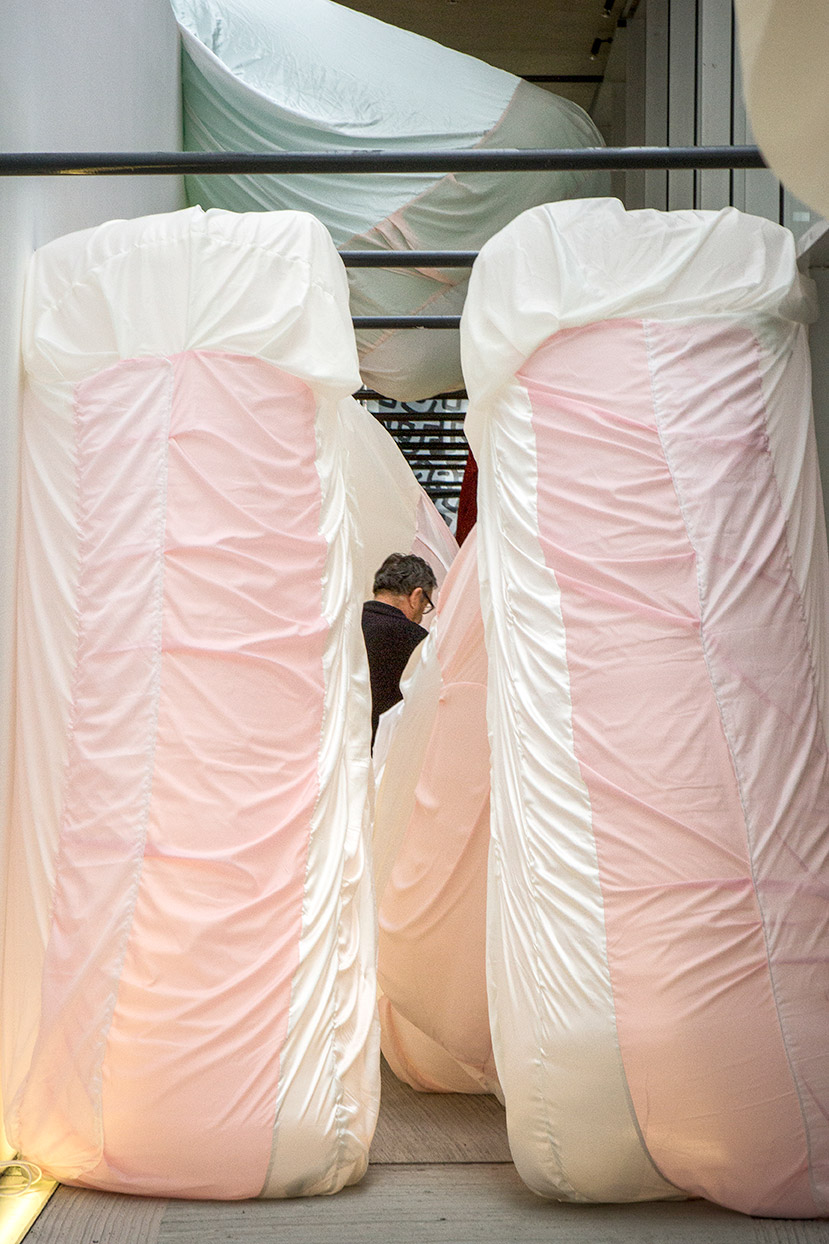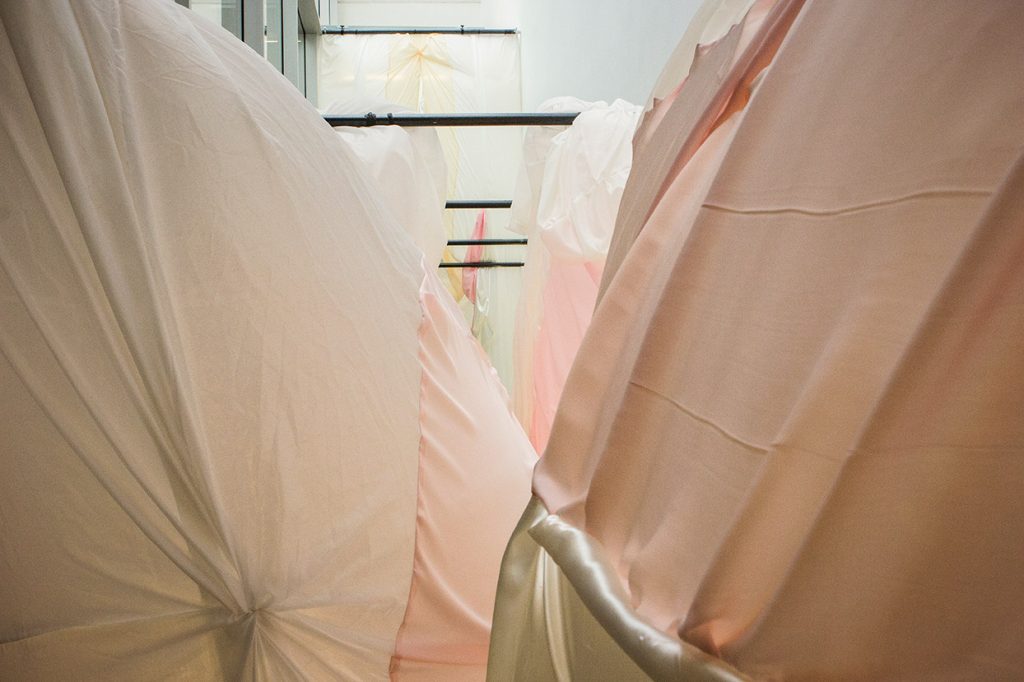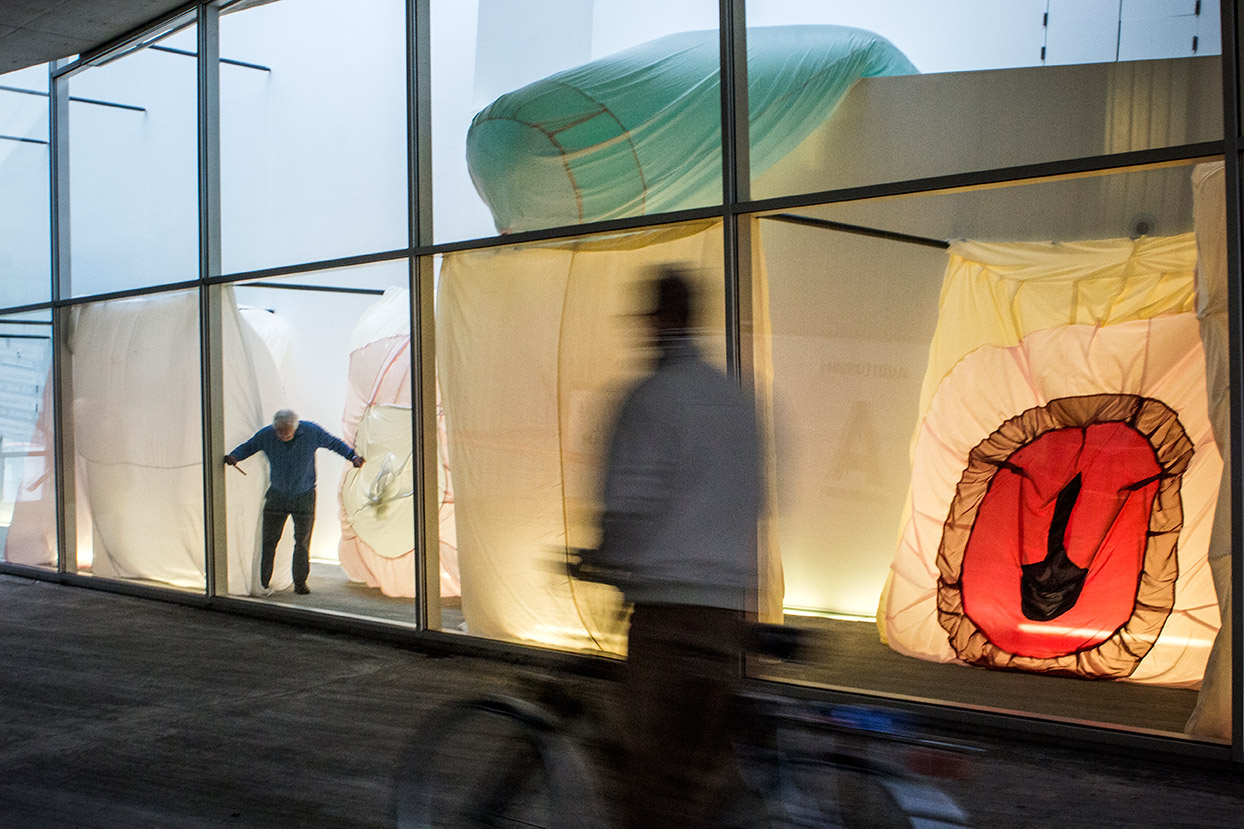
‘Everything depends on whether there is a vibrating wire between us and the world’
For installation and performance artist Aura Rendón Benger (1989, Karlsruhe), this quote by German sociologist Hartmut Rosa perfectly summarises the intention behind her work. With her interactive installations, Rendón Benger deliberately causes tension between her work, the public and herself as a performer. Through direct and short-lived confrontations, and the interaction between distance and proximity, she creates feelings of comfort and disquiet. Rendon Benger’s work is based on personal experiences, gender and the fact that she is a woman thus play an important role. For her, being female is sometimes synonymous with vulnerability. By translating her thoughts into art, she provides the public with an opportunity to immerse themselves in her interpretations of those experiences.
When Aura Rendón Benger (1989) graduated from the Royal Academy of Art in The Hague in 2014, her final project consisted of large, air-filled objects made from kite fabric. These cumbersome yet light ‘beings’ are positioned, squeezed and hung up to fully occupy the space they are in. She has adapted the work specifically to fit the space in the Kunsthal’s window display. As well as being an exhibition space, this narrow area also serves as an area of transition; visitors have to walk down the slope from ‘Keith Haring. The Political Line’ in hall 2 to reach the exhibition ‘Red Prosperity’. Soviet Design 1950-1980’ in hall 1. The display window is therefore an ideal location for the recurring themes in Rendón Benger’s work, such as distance, proximity, intimacy and the role of the general public.

Rendón Benger appeals to the public’s perception, feelings and limits. At work in the window, she plays with the childlike joy and the almost physical experiences of visitors who become immersed in the process as they wind their way through the area. This interaction generates questions and uncertainty about how to deal with proximity, distance and contact with the unknown. Not only does the unavoidable, physical proximity create an intimacy between the work and the viewer, but the personal experiences and the interaction between the participants and the work is also exhibited to a ‘second’ audience outside. It is the ‘voyeur’ himself that becomes the object of interest.



